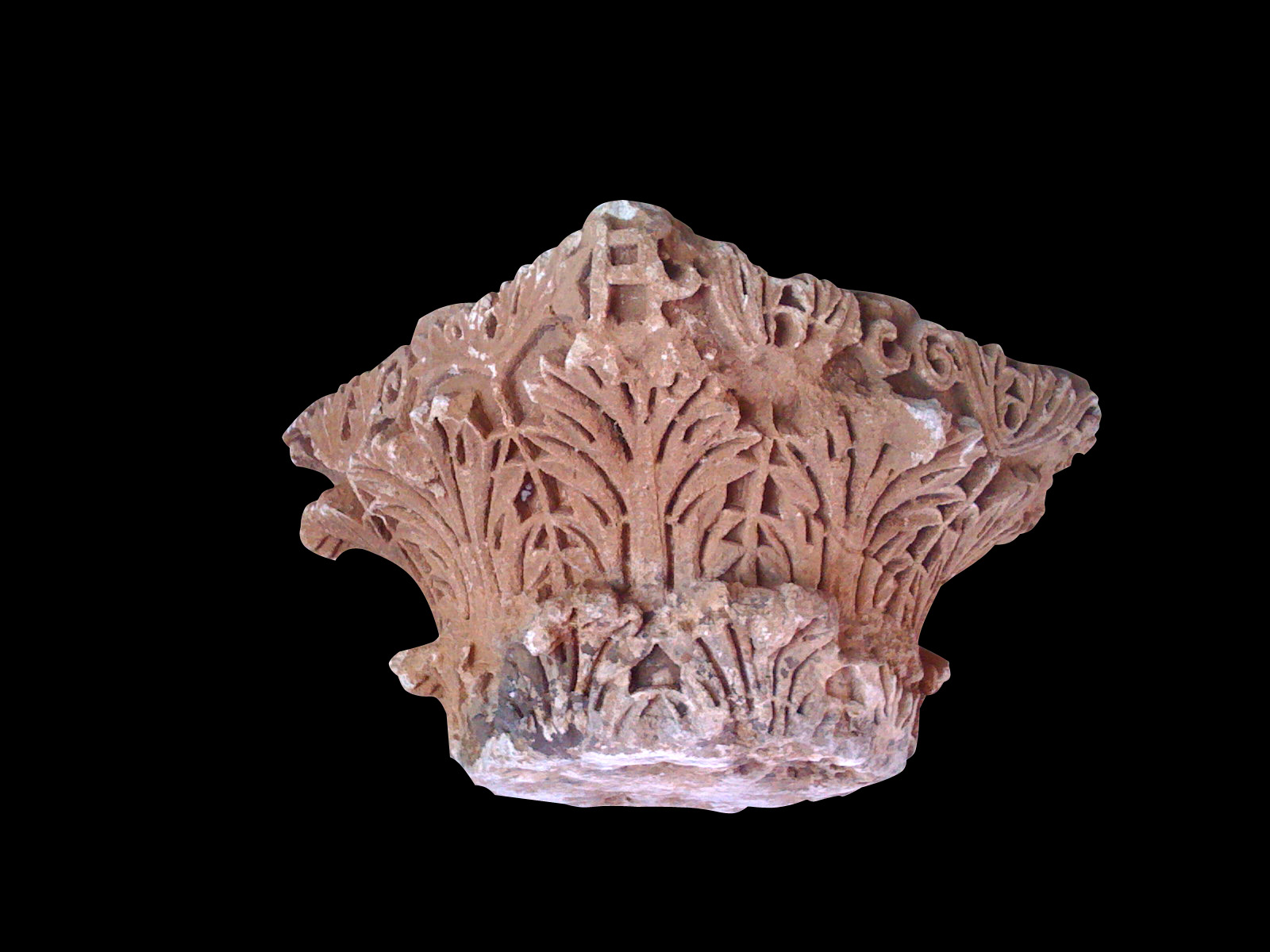Corinthian column capital
Corinthian column capital showing a kalathos dressed with two crowns of acanthus spinosus leaves of the Eastern type. The first crown, much shorter than the second, is made of large adjacent leaves that, by touching each other, create voids in the shape of triangles and pentagons; the page of the leaf is covered with a series of deep drill channels which go from the middle point towards the base with a diagonal arrangement; the voids separating the lobes have an elongated triangular shape. This same treatment can be observed on the leaves of the second crown which are decidedly much taller than those of the first crown and are, therefore, formed by five lobes instead of three. Such leaves also show a midrib carved in slight relief and tapered towards the bottom; here the leaves’ tips cling completely to the surface of the kalathos, following its funnel-shaped profile, except for the central point of the upper lobe which is folded over. Between the leaves of the second crown appear thin vertical sects, a remnant of the cauliculus’ shaft, from which spring both the long calyx leaves – with horizontal arrangement and spiky points marked by thin central incisions – and the thin strips of the helices and volutes, here barely discernible for their being reduced to small, flat spirals. Instead of being placed close to the kalathos’ rim, calyxes, helices and volutes are here carved on the vertical surface that on canonical Corinthian capitals is appointed to the abacus and its decorations. The kind of acanthus visible on this artefact generically recalls Constantinopolitan models, while the shape of the cauliculi that have become mere vertical sects and the calyx leaves pushed over the abacus are distinctive features of capitals produced in Early Christian Syria, although they also appear sporadically on some pilaster capitals of the same Constantinople. Precise comparisons can be made between our artefact and the capitals from the Christian Churches of Mshabbak, Qalb Loze, El-Barah and from the monastic complex of St. Simeon Stylites, buildings all erected between the second half of the V and the VI century AD. Stylistic and compositive similarities can also be found in some Syrian influenced exemplars from Egypt now in the Louvre, which date to the same period. On the basis of the cited comparisons our capital can thus be dated to a period between the second half of the V and the VI century AD and it might also be rightfully ascribed to the Christian production of Syria.







